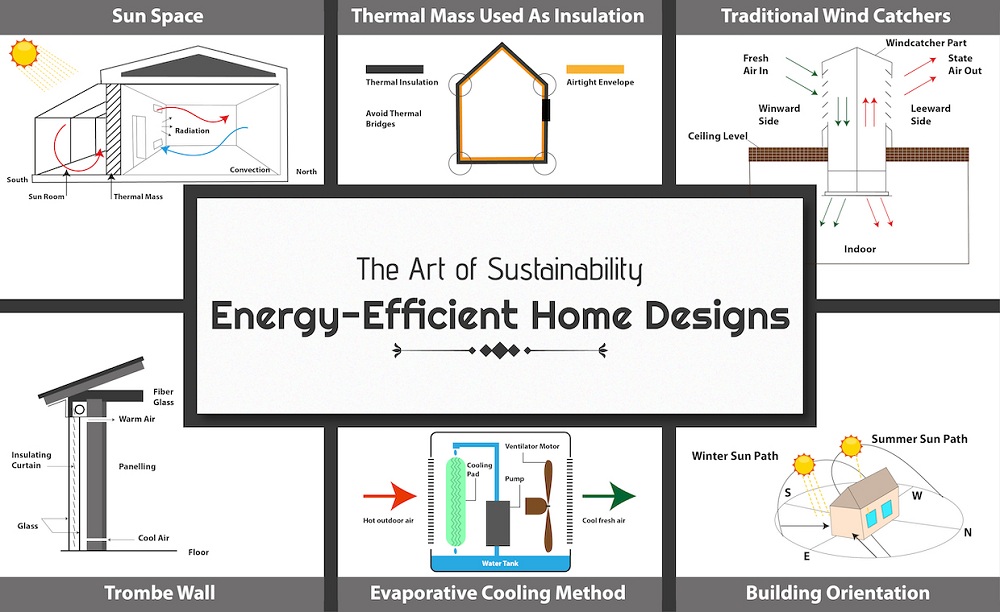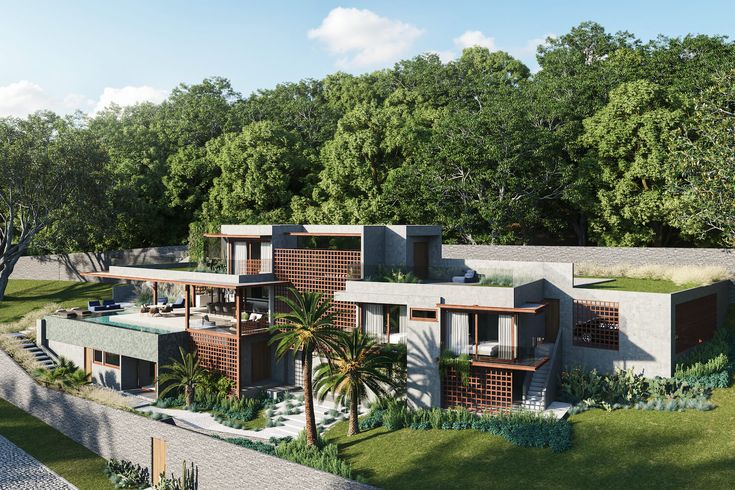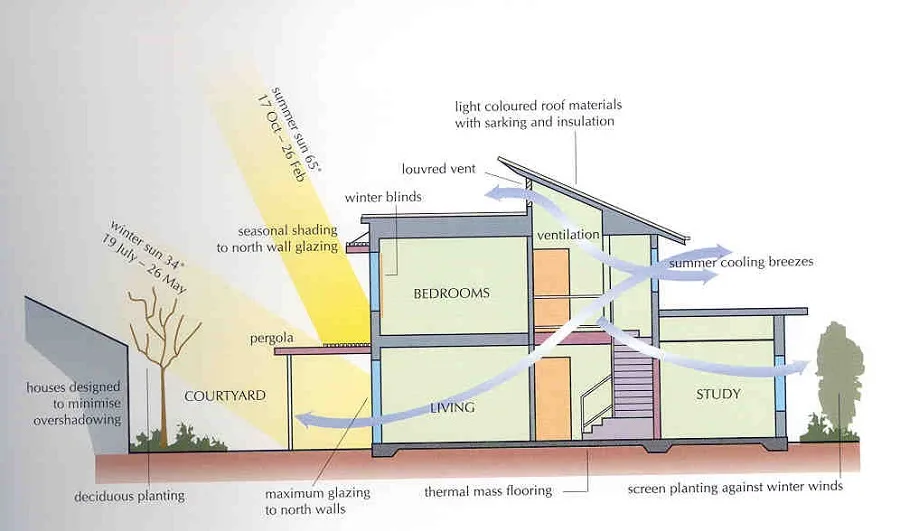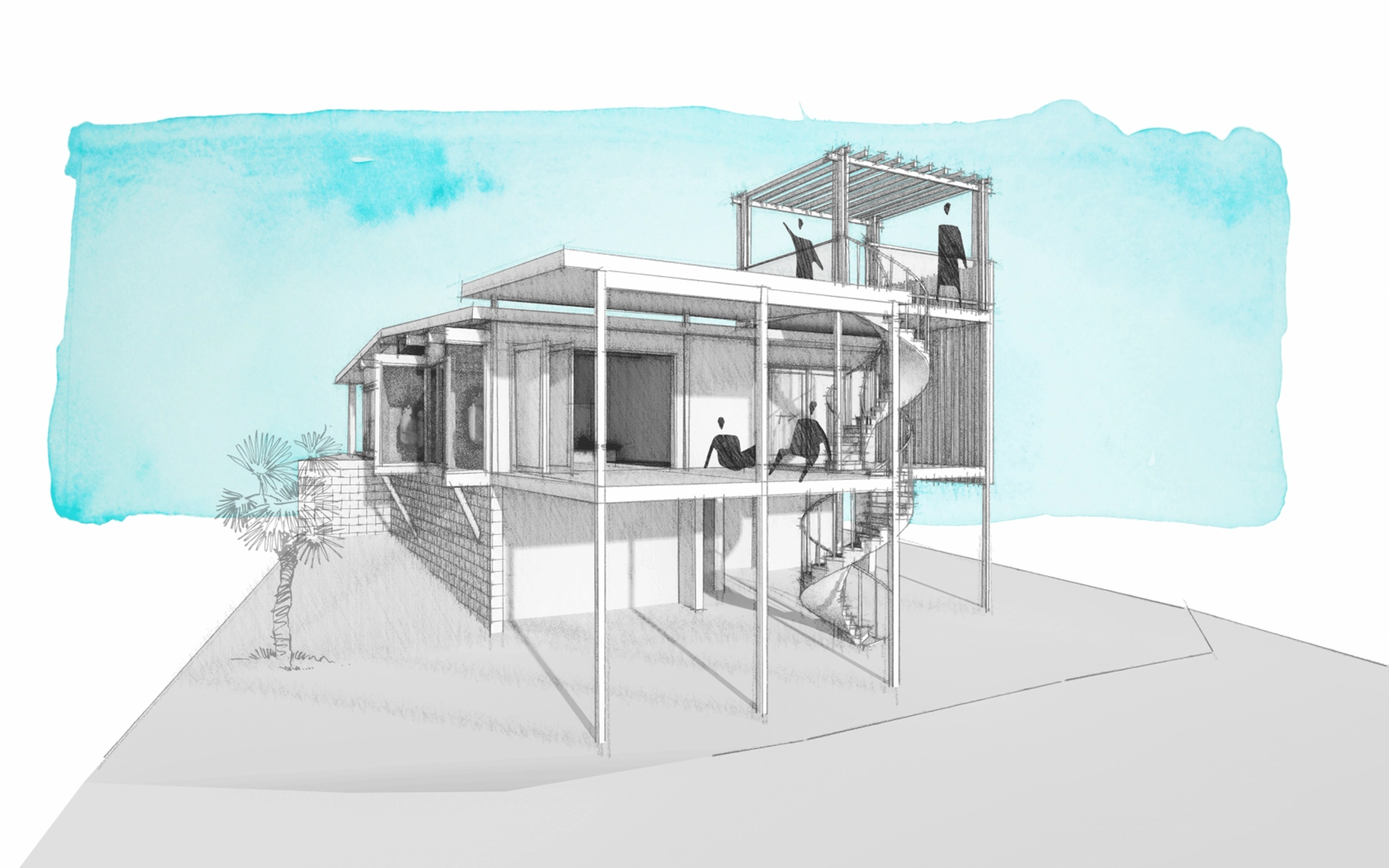Each region has its unique climate characteristics, which should be the primary consideration when designing a home. Modern architecture not only focuses on aesthetics and functionality but also on climate sensitivity. With the right understanding, you can create a beautiful, comfortable, and energy-efficient home that can withstand weather changes. Designing homes that suit the local climate also enhances the well-being of the residents in the long term.
Below are some modern home design concepts suitable for the four primary climate types: dry, temperate, tropical, and subtropical.
Dry Climate Home Design: Focus on Cooling and Durability
Arid climates, such as deserts, experience high temperatures during the day, cold nights, and low humidity. Home design in these areas emphasizes temperature efficiency and protection from intense heat. The success of the design lies in its ability to maintain thermal comfort throughout the day.

Design Features:
- Thick walls made of stone or lightweight concrete to maintain indoor temperatures.
- Minimal window openings to reduce exposure to direct sunlight.
- Cross-ventilation to promote natural air circulation.
- An inner courtyard as a cooler, sheltered space.
Suggestions: Add pergolas or canopies in open areas for natural shading to provide extra comfort during extreme weather. Use light-colored facades to prevent heat from being absorbed by the walls, and install thermal insulation on the roof to reduce heat intake.

Where in the World? Dry climates are most commonly found in desert regions across various continents. In North Africa, countries like Egypt and Morocco exemplify dry zones with their iconic stone-based architecture. In the Middle East, Saudi Arabia features homes adapted to extreme desert heat. Meanwhile, in Australia, interior areas such as the Outback also face dry, arid conditions. In North America, the southwestern United States—like Arizona and Nevada—offers classic examples of homes designed for hot, dry environments.
Temperate Climate Home Design: Flexible and Energy-Efficient
Temperate climates are characterized by four seasons, with alternating temperature changes throughout the year. Homes in these climates are designed to be flexible to both heat and cold, as well as energy-efficient. A flexible design allows residents to adjust temperature and lighting conditions according to the season.

Design Features:
- Sloping roofs to allow rainwater or snow to flow freely.
- Large double-glazed windows for thermal insulation.
- Insulating materials in the floors and walls.
- Highly efficient heating and cooling systems.
Suggestions: Position windows facing south (for the Northern Hemisphere) to maximize sunlight during winter, enhancing energy efficiency. Use heavy or thermal curtains to help control room temperature, and integrate heating and cooling systems with renewable energy sources like solar panels.

Where is the location? Temperate zones are widespread across Europe, East Asia, and parts of North America. In Europe, countries like the United Kingdom and Germany experience four seasons and have long-standing traditions in insulated, energy-efficient housing. In East Asia, Japan and South Korea showcase modern designs that balance heating needs in winter with cooling in summer. The Pacific Northwest of the United States, including states like Washington and Oregon, is another prime example of temperate-climate adaptation in architecture.
Tropical Climate Home Design: Light and Well-Ventilated
Tropical climates experience consistently high temperatures, high humidity, and heavy rainfall. Modern homes in these regions must provide comfort with good airflow and protection from extreme weather. Open designs ensure a healthy balance between indoor and outdoor environments.

Design Features:
- Cross-ventilation and sloping ceilings for maximum airflow.
- Expansive, sloping roofs to protect from heavy rains.
- Patios and balconies as multifunctional transitional spaces.
- Use of natural materials like bamboo and hardwood to keep the space cool.
Suggestions: Plant shade trees near the house to naturally cool the temperature and block direct sunlight. Use wooden louvers or trellis to optimize airflow while maintaining privacy, and incorporate moisture-absorbing building materials like natural stone to keep interiors cool during the rainy season.

Where in the World? Tropical climates are found near the equator across Southeast Asia, Central and South America, and parts of Africa. Countries like Indonesia, Malaysia, and Thailand are famous for their open, airy wooden homes designed to cope with both heat and monsoon rains. In South America, Brazil offers tropical design that blends nature with modernism. Similarly, India’s southern regions and the Philippines have long embraced breezy, elevated structures to combat humidity and flooding.
Subtropical Home Design: A Balance of Open and Closed Spaces
Subtropical climates experience hot, humid summers and relatively mild winters. Home design in these areas should strike a balance between flexibility and comfort to accommodate significant temperature fluctuations. Adaptability to changing weather conditions is key to maintaining comfort throughout the year.

Design Features:
- Flexible openings, such as folding windows and sliding doors.
- Canopies and exterior blinds to protect from summer heat.
- A harmonious balance of open and closed spaces.
- Facade materials capable of absorbing and stabilizing temperature, such as lightweight wood or wood panels.
Suggestions: Install vertical gardens or rooftop gardens for added natural insulation and cooling. Utilize natural ventilation and skylights to reduce the need for artificial lighting and air conditioning. Choose weather-resistant materials like vinyl or metal for exterior components to minimize maintenance and enhance durability against extreme weather changes.

Where is the location? Subtropical climates are found on the edges of the tropics, typically in East Asia, Australia, the southern United States, and parts of the Mediterranean. In southern China, cities like Guangzhou experience long, hot summers and require flexible living spaces. Florida in the U.S. is a classic example of subtropical living, with houses designed to handle both heat and humidity. Northern Australia and South Africa’s coastal zones also fall into this category, often featuring shaded verandas and hybrid indoor-outdoor spaces. Meanwhile, Mediterranean countries like Spain and Italy offer elegant models of climate-smart subtropical housing.
Conclusion
Designing a modern home isn’t just about following architectural trends—it’s about creating living spaces that are in harmony with the environment. By aligning design strategies with the specific needs of each climate—dry, temperate, tropical, or subtropical—homeowners can enjoy greater comfort, improved energy efficiency, and reduced long-term maintenance. These climate-responsive designs not only protect against extreme weather but also promote healthier lifestyles and support sustainability goals. Ultimately, a well-designed home that respects its environment is an investment in both personal well-being and the planet’s future.



